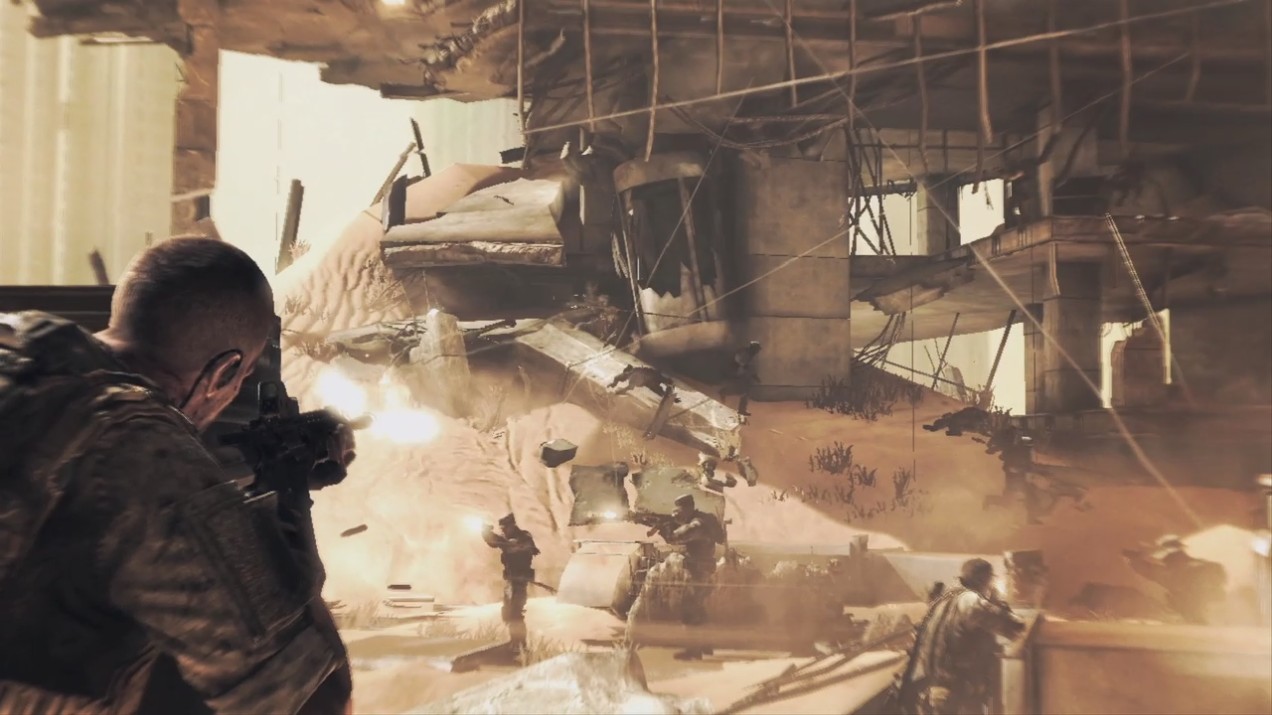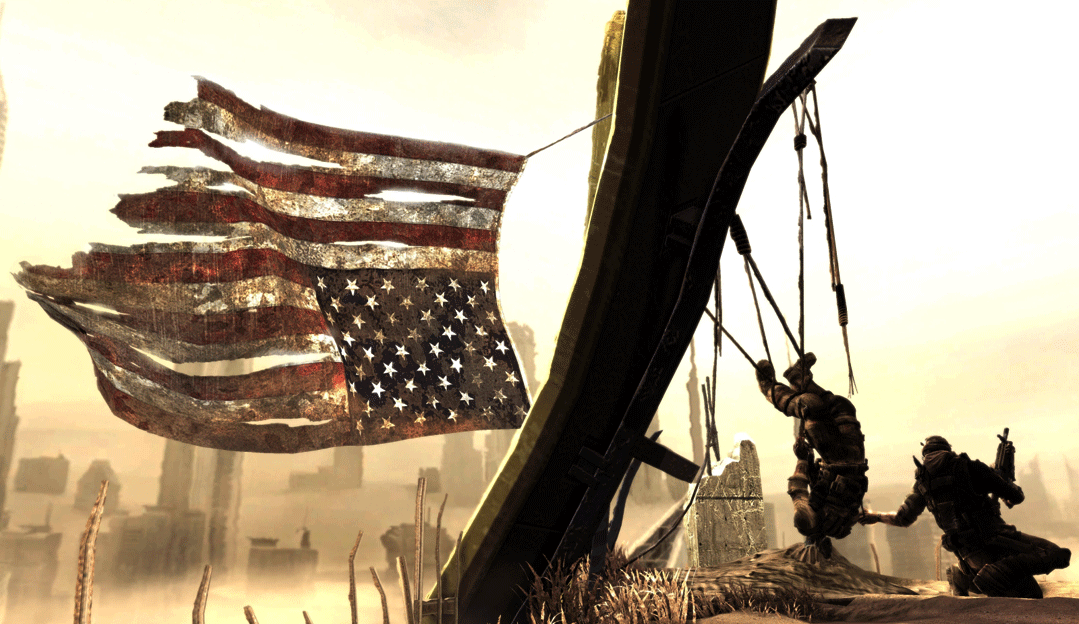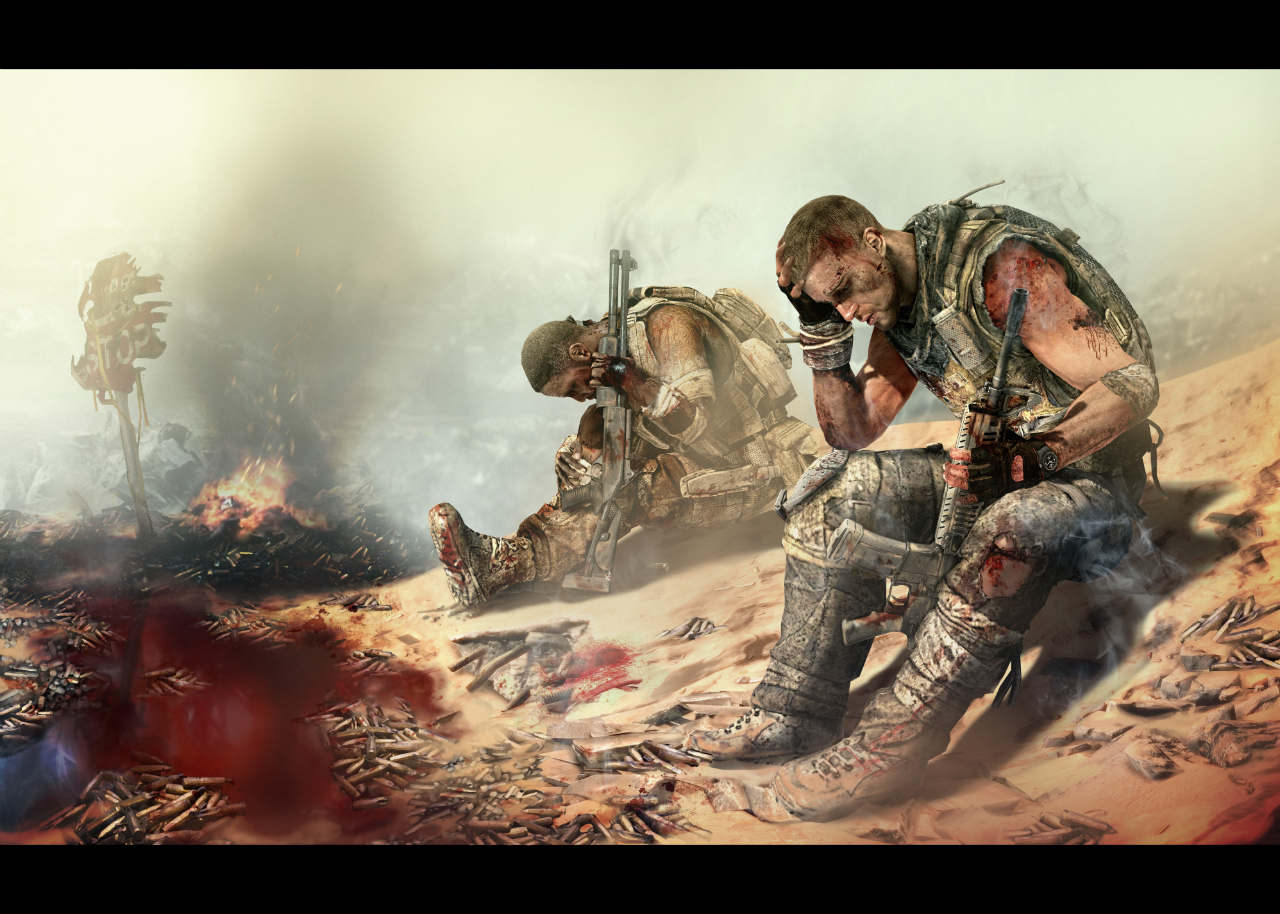Continuing from where we left off in part one, games have gotten pretty absurd in their power fantasies, and the indie community has pushed back on that quite a bit with a multitude of different views on player agency in games.
But two recent mainstream games had a new relationship with the power fantasy. Far Cry 3 and Spec Ops: The Line are commentaries on power fantasies. They do this while simultaneously creating elaborate power fantasies for the player to indulge in. In the same way that Bioshock made a comment about a video game player's lack of agency by deliberately and flagrantly removing it, these games comment on the shallowness of the video game power fantasy by creating unapologetically ridiculous scenarios.
Both games are chock full of cliches and tropes. In Far Cry 3 only the white, male, stranger in a strange land can save the natives. He becomes the leader of their tribe and bangs their priestess. It is pretty much the plot of Avatar. Which was pretty much the plot of Dances with wolves. Which was pretty much the plot of colonialism. In SpecOps: The Line, you play, and stop me if you have heard this one before, a hard nosed by the book soldier who leads his squad through impossible odds. Both games on their surface are absolutely soaking in the a stereotypical soup of headshots and machismo. All problems are to be solved with guns. At least thats how they start.
Spec Ops or: How I Learned to Start Worrying and Hate the White Phosphorous

Spec Ops occurs in the ruins of Dubai. There is a desert. There are people to shoot. So anybody who has played an FPS should feel right at home. The player character has been sent in as the leader of a 3 man squad and, woudn’t ya know it, everything has gone bad and the only solution is guns, guns, guns. The first 1/3 of the game plays out like a standard cover-based 3rd person shooter. The player character, Captain Martin Walker is voiced by Nolan North, which gives the whole affair a comfortable sort of feel. Nolan’s been here before, the player's been here before and everybody slips into their roles like a well worn pair of sneakers. Until you get to the white phosphorous.
One of the most memorable scenes from the Call of Duty games is the AC 130 mission in Modern Warfare 4. It is sort of a gold standard in empowering the player. The player controls a gunship, armed with Howitzers and flying at a God's eye view distance, and lays waste to enemies on the ground. The enemies look like little ants on your night vision screen and you can see their bodies tossed by the sheer power of your guns. You feel absolutely safe and absolutely deadly. The height of empowerment. It feels like you are playing a videogame inside of a videogame.
Spec Ops has a similar scenario. You find yourself facing an impossible number of soldiers between you and your objective. But there is a white phosphorous mortar conveniently located nearby. You launch a camera into the air, and as it hangs over the battlefield via a parachute, you mark targets. The screen looks almost exactly like the one from Call of Duty. Same thermal vision, same God’s eye view. There is one subtle difference. Here you can see your characters reflection in the screen. By emphasizing the screen within a screen, the videogame within a videogame theme is accentuated.
Once you are done burning your enemies with phosphorous, Spec Ops makes the player walk directly through what they have wrought. The empowering distance is stripped away and the player is forced to face the realities of what White Phosphorous does to the human body. Protip: it ain’t pretty. As you walk through the smoldering ruins and hear the screams of the wounded but not yet dead, the previous mortar scene, in retrospect, becomes much less palatable. Power for power’s sake begins to feel empty as the game starts to guilt you about taking actions that, a few moments ago, it was gleefully forcing upon you.

Then you get to the real gut punch. At the back of the enemy base, huddled together are a group of dead civilians. These where the people you where sent here to save and you killed them. You burned them with phosphorous because they where just another white spot on your thermal screen. The camera lingers on a mother shielding her child. Both are dead, frozen in an ashen Pieta.
Spec Ops: The Line is a game that for it’s first 1/3 leads you along on a standard power fantasy shooter where you play as a macho american superman, then it pulls the rug out from under you. For the rest of the game we see the characters slowly break down. The once calm military jargon they yell during combat begins to degenerate into cursing and primal rage. By the end of the game the main character is disfigured, both physically and mentally. The violence has changed him forever.
And that is what Spec Ops is really about, how violence changes things. In the game we see a much more realistic depiction of what would happen to a hero's psyche if they actually did the things that most games demand of them. Nathan Drake can murder thousands of people in Uncharted and still make wisecracks and get the girl. Spec Ops Captain Martin Walker isn’t so lucky. Here the violence sticks.

By adding consequences to power Spec Ops really reconfigured how I thought about what I wanted from a game. As my character became more desperate and sadistic, I shied away from combat. The close quarters finishing moves that were executed with clean military precision at the beginning of the game, became brutal displays that I didn't seek out. Spec Ops got me off the power fantasy treadmill by poisoning the well.
In part 3, I will tackle how Far Cry 3 deals with power fantasy and attempt to wind this whole thing up.
